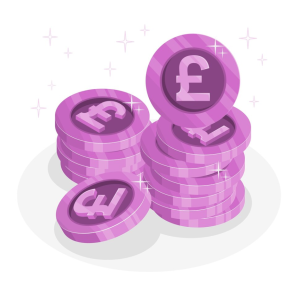According to a recent report by Barclays, consumer card spending growth in the UK has slowed to its weakest pace in over three years. The findings indicate that despite a decline in inflation, rising household costs, particularly in council tax, broadband, and mobile services, are significantly curtailing consumer expenditure.
Sluggish Spending Amidst Economic Pressures
The report highlights that consumer card spending in May grew by just 1.0% year-on-year, marking the smallest increase since February 2021 and trailing significantly behind the current Consumer Price Index including Housing (CPIH) inflation rate of 3.0%. This slowdown is attributed to a combination of factors, including higher essential bills and unfavorable weather conditions, which have dampened high street activity.
Consumer Confidence and Discretionary Spending
Despite the tepid growth in card spending, there is a silver lining as some consumers remain optimistic about their financial future due to the recent drop in inflation. About 28% of respondents expressed plans to increase spending with the improvement of weather conditions. However, this optimism is tempered by the reality of ongoing financial constraints, with a notable 87% of consumers expressing concern over the impact of rising household bills on their personal finances.
Sector-Specific Trends
April’s price hikes in essentials such as council tax and broadband began to erode consumer confidence, reflected in the minimal increase in non-essential item spending (0.7%) since February 2021. The report also notes a decline in spending on utilities by 12.5%, thanks in part to the April Ofgem price cap decrease.
Discretionary categories like takeaways and fast food witnessed their first decline since May 2020, dropping by 0.2%. Similarly, restaurant spending plummeted by 15.7% in May, a steeper fall than April’s 13.1%. This trend is echoed in the travel sector, where airlines and travel agents experienced the smallest uplifts in spending since the summer of 2021 and August 2023, respectively.
Retail Sector Challenges
The overall retail sector faced significant challenges, with a 0.4% drop in spending—the most substantial decline since September 2022. In-store spending (excluding groceries) and clothing sales fell by 2.6% and 1.0%, respectively. Over half of the consumers who are cutting back on discretionary spending are limiting their purchases of new clothes and accessories, with many opting to re-wear older items due to cost-of-living concerns.
Bright Spots and Consumer Resilience
Despite the general downturn, some sectors showed resilience or signs of recovery. Pharmacy, health, and beauty store sales rose by 5.0%, possibly buoyed by the “lipstick effect” and a growing interest in personal wellness. Furniture and DIY stores saw the smallest decreases in months, suggesting that some consumers are taking advantage of the warmer weather to invest in home improvements.
Economic Outlook
Karen Johnson, Head of Retail at Barclays, noted that while May was challenging for retailers, there were occasional bright spots. “The few sunnier days in the month did bring a welcome uptick in footfall,” she said. Looking ahead, events like the Euros, Wimbledon, and Taylor Swift’s ‘Eras Tour’ are expected to boost consumer spending during the summer months.
Jack Meaning, Chief UK Economist at Barclays, remains optimistic about the broader economic trajectory. “The underlying direction of travel remains positive, with falling inflation, real income growth, and low unemployment all pointing to a gradual acceleration in consumer spending over the next 12 months,” he explained, particularly as interest rates are expected to decrease in the latter half of the year.
In summary, while the UK faces significant economic headwinds, there are signs of resilience and potential for recovery, especially if favorable conditions such as improved weather and significant cultural events can spur consumer spending in the coming months.






